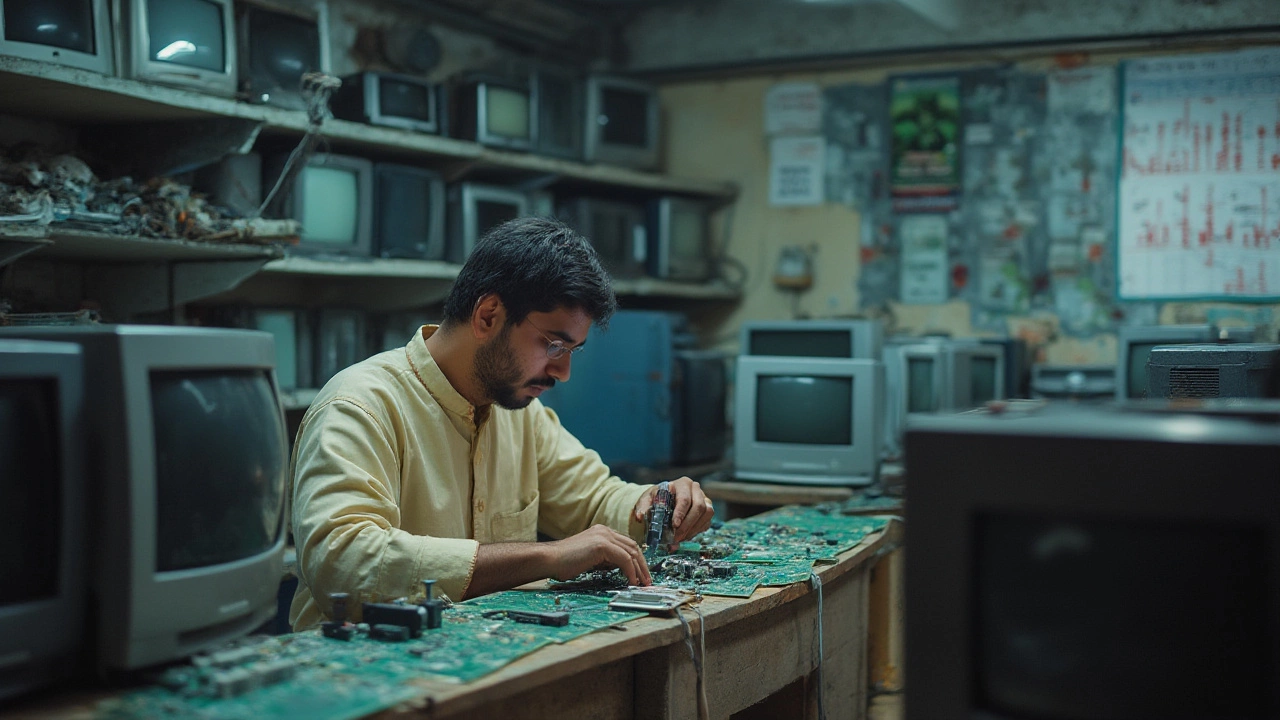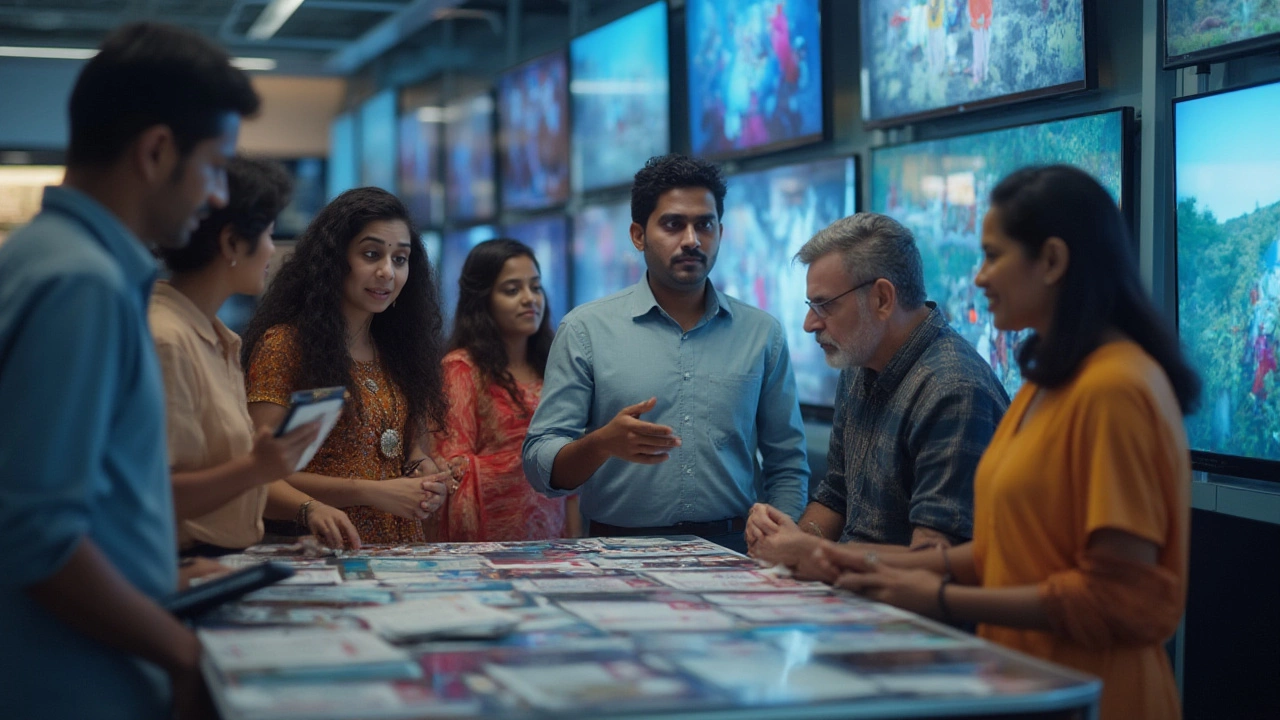
If you’re about to fork out the better part of a grand (or more) on a shiny new telly, you probably want to know: which TV brand actually survives the marathon? That’s a big question this year, with everything getting flashier, thinner, and somehow more fragile. Walk through Brighton’s electronics shops, or scroll through online forums, and you’ll spot wild debates and the occasional horror story: flickering displays after two years, weird lines across expensive OLEDs, or even TVs that ghost on you just after the warranty runs out. It’s not just about being tight-fisted—it’s about buying something built to stick around while you binge those all-night series marathons or keep up with live football. So, let's get brutally honest about which TVs go the distance and why certain brands edge out the rest.
How Long Should a TV Really Last?
The million-pound question is actually pretty simple—how long should you expect a TV, especially a smart TV, to last in 2025? Forget marketing promises for a second. The typical lifespan for modern LED TVs (which covers most LCD screens, including so-called QLEDs) is between 40,000 to 60,000 viewing hours. If you’re watching five hours per day, that’s about two decades if everything goes to plan. OLED TVs, those gorgeous but sometimes finicky panels, have a lifespan of around 30,000 to 50,000 hours before you might see brightness dimming or faint signs of burn-in. But here’s the thing: the story changes dramatically depending on, well, how you treat your telly and who built it.
Take Samsung, for example. Their flagship QLEDs have consistently scored high for durability in UK consumer surveys and tech review labs, with many users reporting nearly a decade of hard service before any major hiccups. Samsung's heavy investment in heat dissipation and software updates definitely pays off. On the flip side, some first-wave OLED models from LG were notorious for early signs of burn-in if you left Sky Sports on all afternoon. LG has made strides with their latest panels, tweaking the pixel-refresh features and using newer WRGB structures to extend longevity. In a 2024 Which? consumer test, LG OLEDs clocked an impressive 40,000+ hours before panel wear became obvious, and issues like burn-in dropped below 2% for users who rotated content and followed basic care instructions.
Don’t write off Sony if you crave reliable hardware. Their LEDs and the highly-rated A90J OLED are robust, partly due to old-school Japanese engineering stubbornness and a strict parts supply chain. According to data from a popular TV repair centre in London, Sony sets under £1,200 had lower failure rates in the first five years than almost any rival. Panasonic also has a cult following for reliability—maybe not as trendy in the living room, but their mid- and high-end sets rarely show up needing major repairs. Hisense and TCL, both rapidly growing, now match the big dogs on lifespan for their high-spec models, especially since they’ve improved build quality and stepped away from some of the notorious short-lived budget panels of past years.
Still, the hidden killer for most TVs isn’t the panel—it’s the backlighting or the power board giving up the ghost. Cheap parts and poor heat design take their toll, and this is where ‘brand matters’ isn’t just a slogan but a fact. Brands like Samsung and Sony almost always use higher-grade capacitors and better heat shielding on high-end sets compared to fly-by-night budget models, which is why you often see their TVs outliving cheaper ones by a good few years.

Brand Breakdown: Winners, Losers, and Survivors
Let’s get more specific. Here’s a hard-hitting fact—while almost every TV can technically last around a decade, that doesn't happen unless the manufacturer puts reliability high up in their priorities. Brand reputation is built (and trashed) by failure rates, long-term customer happiness, and how they handle support.
Samsung sits at the top for a reason. Their QLED lineup—Q70, Q80, QN90, and above—just doesn’t die easily. You’ll find people on Reddit and AV forums showing off eight-year-old Samsungs still pumping out crisp 4K. The company’s software update support is also better than most, pushing bug fixes and even feature improvements for longer. One interesting stat: in a UK warranty claim analysis of over 30,000 TV repairs (2022-2024), less than 5% were Samsung models over three years old, compared to 9% for lower-cost brands.
LG is right on Samsung’s heels, especially for OLED lovers. Their latest EVO OLED panels survive marathon gaming sessions, constant Netflix, and even a local mother who let her toddler draw on the screen with yoghurt (it cleaned off, apparently). LG expanded warranties on OLEDs in Europe up to five years on the panel itself—not just to brag, but because their internal failure rates dropped by half since 2022. Don’t ignore their NanoCell LED TVs either. They’re nearly bombproof, and while you won’t get the deepest blacks, you’re probably not replacing them anytime soon.
Now, Sony punches above its weight among brand loyalists. Their panels are often made in-house or sourced from top-tier suppliers, with picture processors considered the gold standard. But what’s more important for longevity: their LEDs rarely flicker out, even after years of heavy use. A 2023 survey of repair shops across England cited Sony as one of the least likely to see power board or backlight breakdowns within five years, especially on the X90/X95 and A80/A90 series. It’s a combo of higher build costs and obsessive quality controls—something the Japanese brands are famous for. Panasonic, though more niche these days, quietly holds a legendary reputation among tech repair pros; their mid-grade LEDs and Hollywood-tuned OLEDs often last up to a decade without drama.
Hisense and TCL deserve a mention because they’ve absolutely smashed old expectations. Five years ago, nobody would have put Hisense in the same league as Sony, but their ULEDs and mini-LED sets now use panels from the same factories as bigger brands. The gap has narrowed to the point that, with the right model (avoid the cheapest), these are real contenders even for families who don’t like changing TVs every few years. Just be sure to check the warranty terms—some budget Hisense models still limit you to two years, but higher-spec ones now match the big players at three to five years out of the box.
| Brand | Average Lifespan (Years) | Warranty (UK, 2025) | Common Issues |
|---|---|---|---|
| Samsung | 8-10+ | 5 years (premium models) | Rare backlight failures |
| LG | 7-9 | 5 years (OLED panel) | Potential burn-in, rare with newer EVO |
| Sony | 8-10+ | 5 years (select models) | Occasional software lags |
| Panasonic | 8-10 | 3-5 years (varies) | Remote reliability |
| Hisense | 6-8 | 2-5 years (varies) | Power supplies in budget models |
| TCL | 6-8 | 3-5 years (varies) | Panel banding |
Be wary of ultra-cheap brands with names you barely recognize. They might look tempting, but warranty claims and horror stories about flickering or totally dead sets after just 18-24 months are all too common. It’s no accident major UK retailers often only stock the mainstream big five—returns are costly, and unhappy TV buyers will never forget.

Tips and Real-World Advice for Buying the Longest-Lasting TV
Having the right brand is only half the story. Simple habits and smart buying can mean the difference between a trusted telly for years or a painful, expensive replacement.
- Pick the Right Panel Type for Your Use: If you watch static content—news tickers, video games or sports—think twice about OLED unless you’re willing to rotate content and use screen savers religiously; new models handle this way better now, but it’s still relevant if you’ll park on the same channel for days at a time. LED/QLED is more forgiving for wall-mounted TVs in sun-lit lounges or kids’ rooms.
- Focus on Warranty and Customer Service: Five years should be your minimum target for a premium set. Ask for written details before you buy—many UK stores will price match AND offer bonus months on the manufacturer’s warranty. Samsung and LG are currently leading with extended coverage, especially on OLED panels.
- Placement Really Matters: Mount your TV on a wall with decent breathing room. This isn’t just for aesthetics—it helps dissipate heat, which is the #1 killer of TV electronics. Never block the TV’s vents with blankets or soundbars.
- Keep It Clean (Seriously): Every few months, dust the vents and screen gently. Built-up dust can trap heat, which shortens the life of backlights and processing chips.
- Update Firmware Regularly: Annoying? Sometimes. But firmware fixes can keep your TV from developing weird issues that could snowball over time. Sony, LG, and Samsung push out updates for 5+ years on most flagships, so say yes when prompted, as long as you double-check what’s in the update notes first.
- Avoid Cheap Third-Party Accessories: Cables, remotes, or wall mounts that cut corners can fry circuits subtly over time. Stick with trusted brands for anything plugging into your new TV.
- Use a Surge Protector: UK weather can be wild, and random power surges or brownouts are more common than you might think. A £20 surge protector pays for itself fast—fried power boards are a nightmare repair even under warranty.
- Check Reviews Twice: Don’t just trust last year’s glowing forum post. TV models can change internals year by year, even if the product name stays the same. Dig for the most recent user experiences, especially if you’re going slightly off-brand.
- If You’re a Heavy User, Go for Premium Ranges: The extra cash buys you better cooling, reinforced materials, and often a longer, more generous repair window. For example, Samsung’s The Frame series and Sony’s Master Series have stronger internals than their budget siblings.
- Register Your Product: As boring as it is, this unlocks better warranty support with most brands. If your serial number’s in the system, getting repairs sorted is easier all around.
Want to push your TV’s life even further? Consider lowering backlight or OLED brightness settings. Not only does this reduce strain on the panel, but you’ll also see truer blacks and much less risk of early failure. For OLEDs especially, sticking to moderate settings can easily add a year or more to real-world use. Got pets or small kids? Avoid low-mounted TVs—accidental hits and spills are probably the biggest enemies of long-lasting sets outside of dodgy power supplies.
Look out for future-proofing, too. New TVs in 2025 will ship with Matter-ready connectivity, faster HDMI 2.1 ports, and more energy-efficient processors. While these sound like marketing fluff, energy-efficient TVs run cooler and simply last longer, with Samsung and LG topping efficiency charts this year (BBC tested a range of 2025 flagships, and Samsung’s QN90C came out using 20% less power than closest rivals).
If you’re still on the fence, here’s a tip from my own Brighton mates who run AV installation: ask your installer which brands they see the least for repairs. Their answers almost always mirror big consumer surveys—Samsung, LG, Sony, and, for a dose of nostalgia, Panasonic. Trusted names for a reason, and better value in the long run—even if the upfront cost gives you sticker shock.